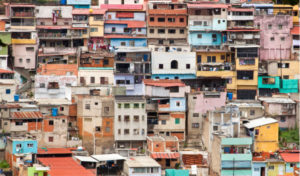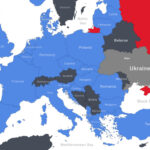Recently the NYT published two major articles on the crisis in Venezuela. Never once did the newspaper blame the crisis on socialism, but rather on “misguided policies.” Not mentioned as “misguided policies:” widespread nationalizations of industry, massive public housing schemes, heavily subsidized food and household products, “free” healthcare.
Francis Menton in the Manhattan Contrarian explains what went wrong in Venezuela, at one point South America’s wealthiest county. Mr. Menton begins the story with PdVSA, the nationalized Venezuelan oil producer.
To be fair to Chavez and Maduro, PdVSA became state-owned long before they took over, actually in 1976. A few years after Chavez’s accession to power in 1998, there was a big strike by the workers.
The NYT’s Account of the Strike
Workers went on strike at the state-run oil firm, Petróleos de Venezuela, or PDVSA, which he had long denounced for its associations with business elites and the United States. The strike threatened to destroy the economy and Mr. Chávez’s presidency. But it also presented an opportunity to stave off another uprising. After the strike collapsed, he fired 18,000 PDVSA workers, many of them skilled technicians and managers, and replaced them with some 100,000 supporters. Much of the firm’s operating budget was diverted into programs for Mr. Chávez’s political base, payoffs for government cronies and subsidies to keep his promise of affordable food.
What if There Were a Strike at a Major U.S. Oil Company?
Because the business is privately owned, the strike would be of little or no interest to the government. Either the strike would quickly be settled by the private owners for some additional compensation for the workers or, in a worst case, the strike would continue until the company went into bankruptcy. In the latter case, the assets would be sold off to other producers.
Meanwhile, there are plenty of other companies to produce oil, and production from other companies would continue without major effect to the economy. And for that reason, we don’t much see unionization or strikes in industries with large numbers of companies. Certainly, a strike in the U.S. against an oil company, even a huge one, would have little to no effect on the overall economy, let alone on the political situation of the country.
How the Socialist Model Destroyed the Economy
But under the socialist model, with just one nationalized company in the country’s dominant industry, the strike could “threaten to destroy the economy.” Chavez decided he had to get rid of the 18,000 workers who opposed him but knew how to produce the oil, and replace them with more than 5 times as many people, chosen on the basis of loyalty to the regime, but mostly without training or expertise.
How’s This for a Collapse?
At the time of the PdVSA strike in 2002, Venezuela’s oil production averaged about 3.2 million barrels per day. By the beginning of this year, Venezuela’s production was down to 1.2 million bbl/d, and for the most recent month, April 2019, it was 830,000 bbl/d.
But there is more, Mr. Menton notes, including free handouts to low and moderate income people. The handouts far exceeded the ability of the productive economy to support them.
Printing Money and Hyperinflation
In the case of the Chavez/Maduro regime, these handouts have mostly been in the areas of housing, food, household products and medical care. In the early days, revenue to support the handouts came largely from exports of the government-controlled oil. But as the oil production has declined, the ability to continue that model went away. The government resorted to the old standby: printing money. Today, hyperinflation is ongoing.
From 17 May NYT’s Article:
Juan Carlos Valles arrives at his tiny canteen in a corner of the market by 5 a.m. and begins making a broth out of beef bones and frying corn pastries in the darkness. He says his stall has been without power since March, his sales are down 80 percent since last year and each day is a struggle against soldiers who force him to accept nearly worthless low-denomination bills. Whatever money he makes he immediately invests in more bones and corn flour, because prices go up daily. “If you take a rest, you lose,” said Mr. Valles, who has run his canteen since 1998. “The money has become worthless. By the time you take it to the bank, you have already lost some of it.”
Things in Venezuela Not Working
Fortunately, no politicians in the U.S. would be so dumb as to propose programs of massive handouts of free stuff to low and moderate income people, financed by the printing of money. Or would they?
Recently one of the originators of the Green New Deal was asked how to pay for all the free stuff proposed under the GND. The author was quoted in January 2019 Business Insider as saying that Modern Monetary Theory (MMT) should be “a larger part of the conversation.”
If you haven’t heard of Modern Monetary Theory, Menton explains below:
In brief, that’s the proposition that “governments that control their own currency can spend freely, as they can always create more money to pay off debts in their own currency.”
Read more here.
If you’re willing to fight for Main Street America, click here to sign up for the Richardcyoung.com free weekly email.






